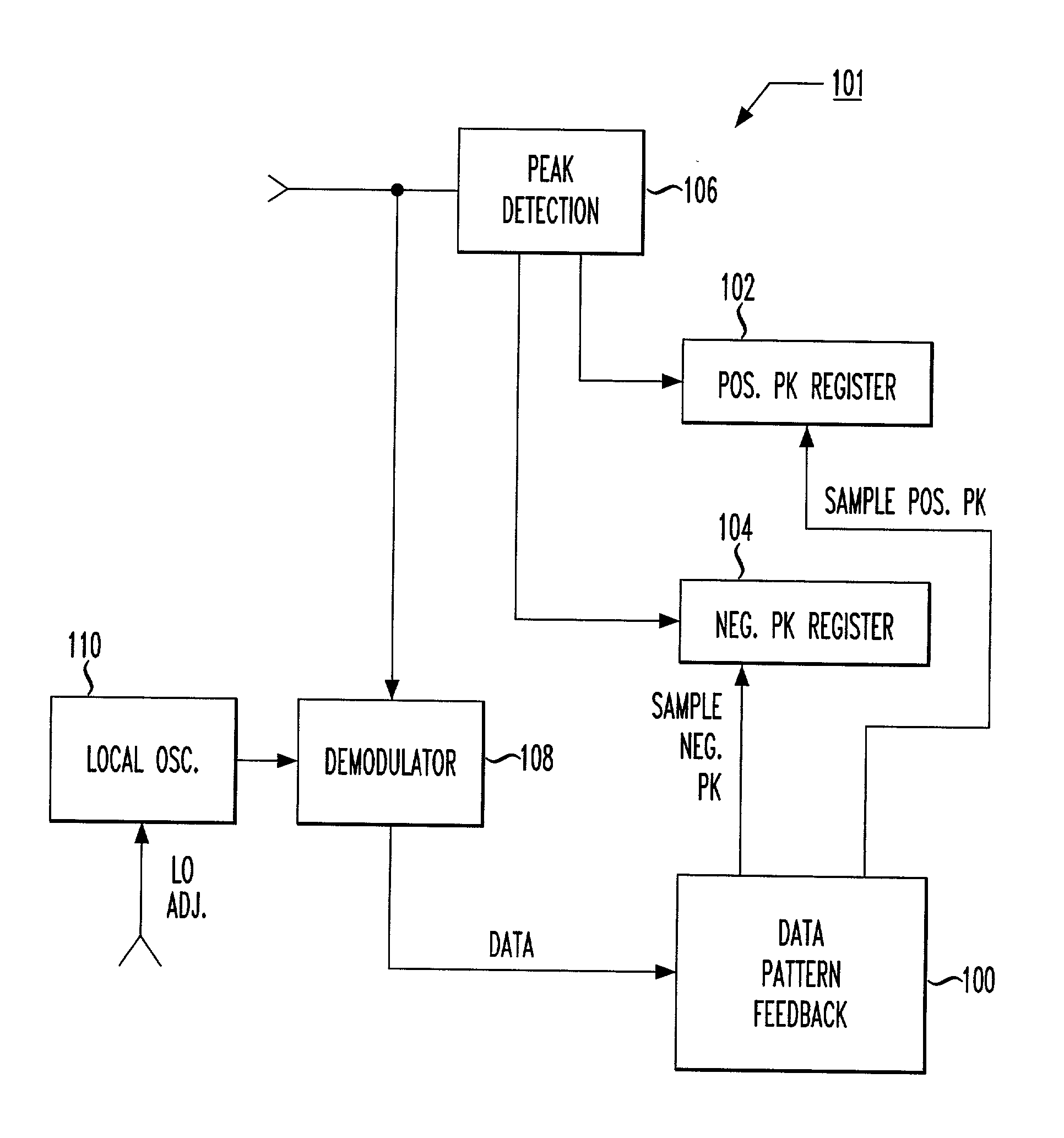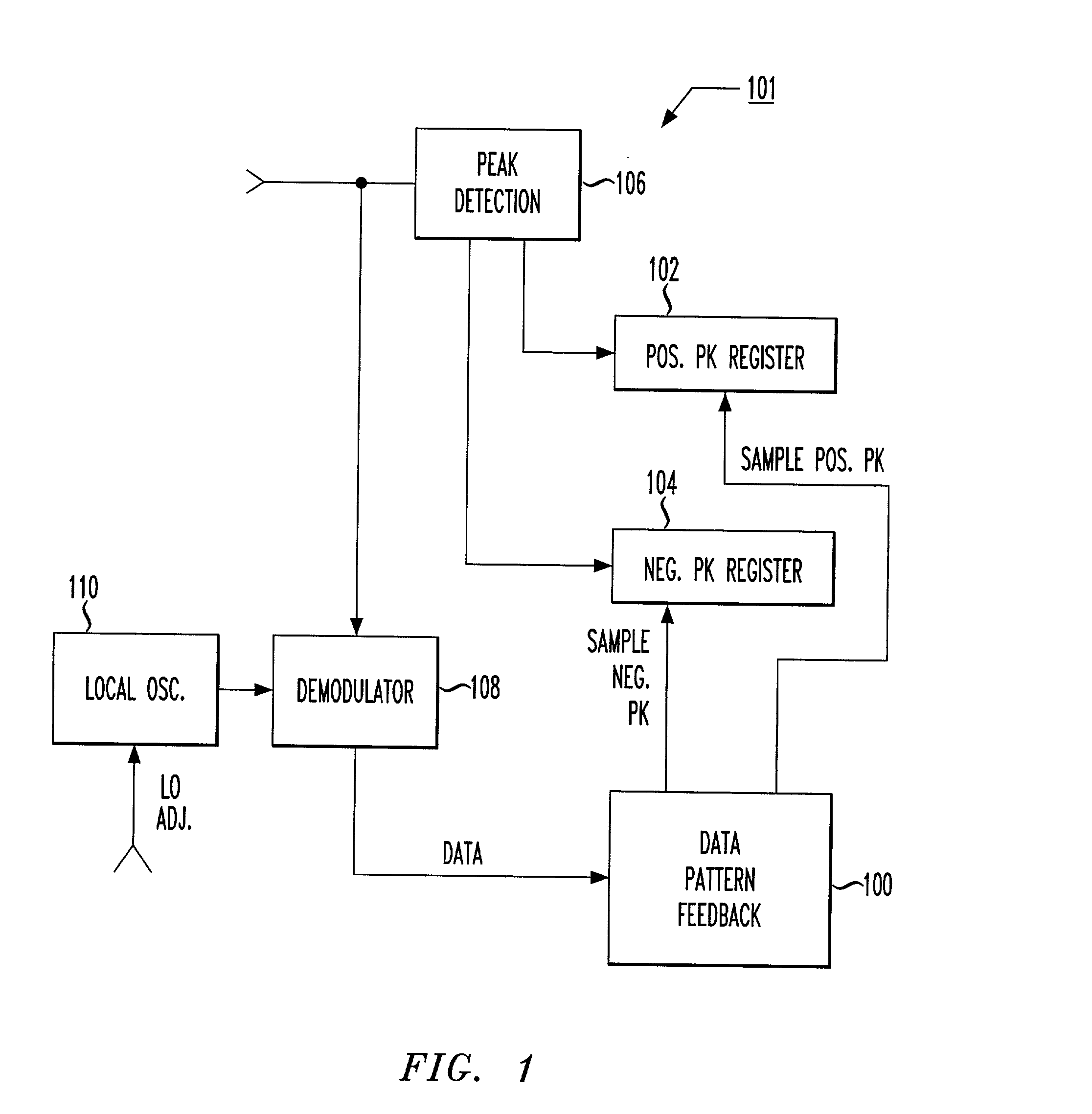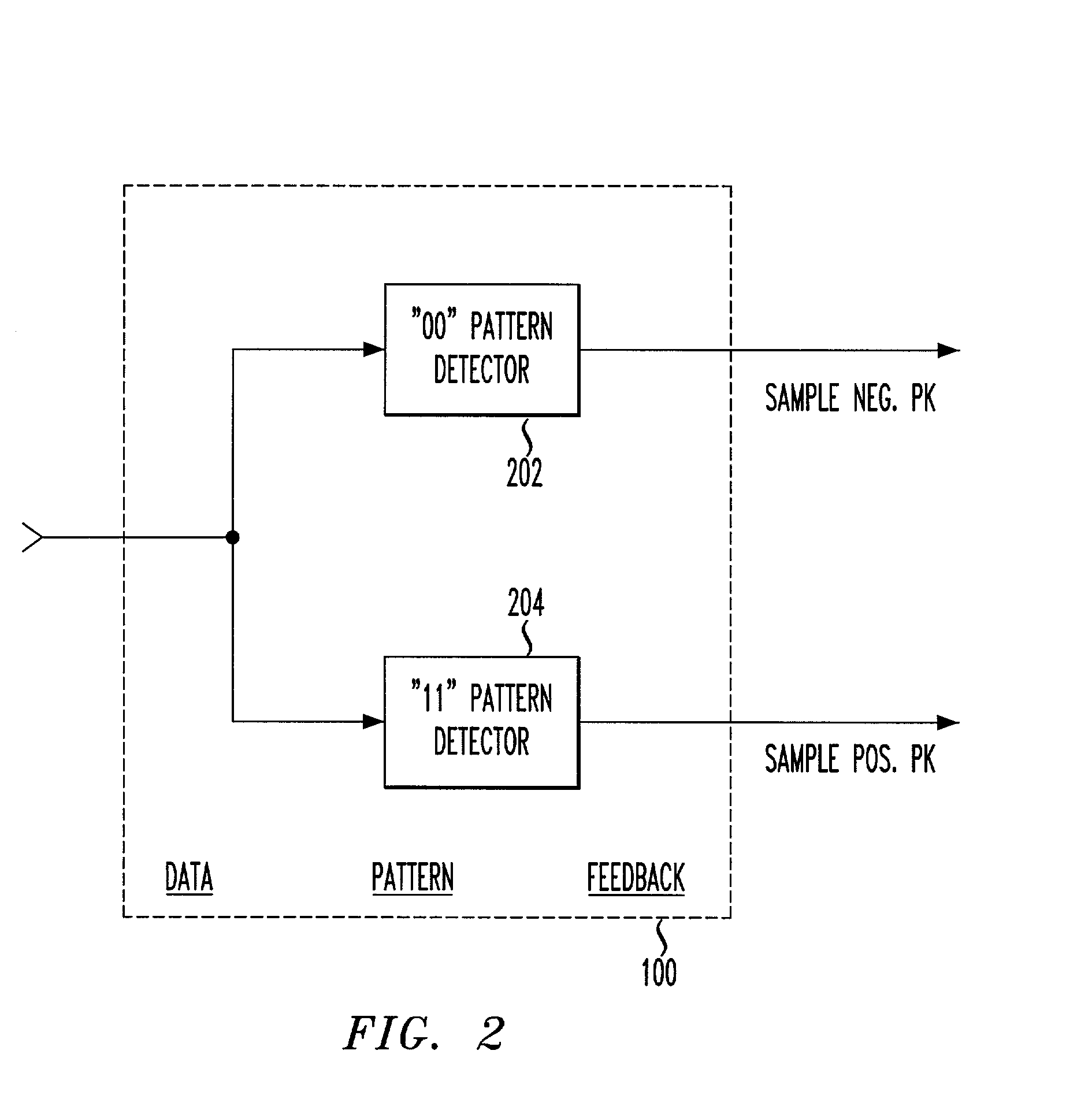Fine-stage automatic frequency compensation in post-detection BLUETOOTH applications
a fine-stage automatic and bluetooth technology, applied in the field ofpiconet wireless networks, can solve the problems of prone to errors in the conventional method of detecting frequency offset, incorrect adjustment of local oscillation, and different appearan
- Summary
- Abstract
- Description
- Claims
- Application Information
AI Technical Summary
Problems solved by technology
Method used
Image
Examples
Embodiment Construction
[0024] The present introduces a data-pattern feedback mechanism in the peak detection process of automatic frequency compensation.
[0025] FIG. 1 shows a block diagram of an exemplary fine-stage automatic frequency compensation (AFC) system including data pattern feedback in peak detection, in accordance with the principles of the present invention.
[0026] In particular, FIG. 1 shows an automatic frequency compensation system 101 including a peak detection module 106 and a data pattern feedback module 100. A processor may be used to comprise and / or control the various digital components shown in FIG. 1. The processor may be, e.g., a suitable digital signal processor (DSP), microprocessor, or microcontroller.
[0027] The automatic frequency compensation system 101 comprises an otherwise conventional demodulator 108, local oscillator 110, and peak detection module 106. The AFC system 101 also includes suitably sized positive peak register 102 and negative peak register 104.
[0028] The peak ...
PUM
 Login to View More
Login to View More Abstract
Description
Claims
Application Information
 Login to View More
Login to View More - R&D
- Intellectual Property
- Life Sciences
- Materials
- Tech Scout
- Unparalleled Data Quality
- Higher Quality Content
- 60% Fewer Hallucinations
Browse by: Latest US Patents, China's latest patents, Technical Efficacy Thesaurus, Application Domain, Technology Topic, Popular Technical Reports.
© 2025 PatSnap. All rights reserved.Legal|Privacy policy|Modern Slavery Act Transparency Statement|Sitemap|About US| Contact US: help@patsnap.com



